Scaffolding Companies Fairborn
Find top Scaffolding Erectors in Fairborn
Receive 3 FREE Construction Scaffolding quotes for your project today! Compare profiles, reviews, accreditations, portfolio, etc... and choose the best deal.
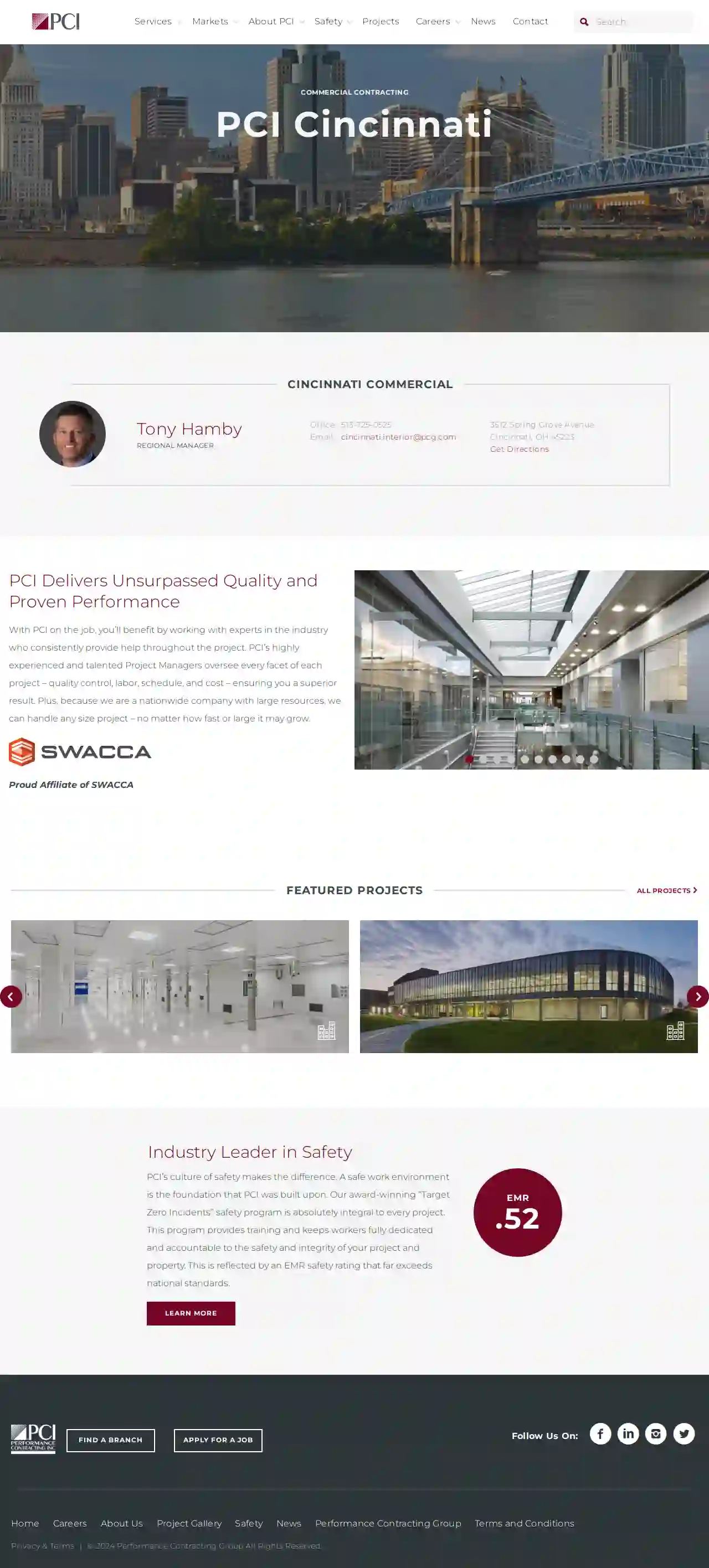
Performance Contracting Inc
4.77 reviewsCincinnati, OH, 3512 Spring Grove Avenue, 45223, USPerformance Contracting, Inc. is a top-tier specialty contractor in the United States, providing a wide range of services to industrial, commercial, and non-residential sectors. With over 60 years of experience, PCI delivers top-tier construction services, focusing on creativity, innovation, and customer satisfaction. PCI's integrated service offerings provide a comprehensive solution designed to streamline projects and increase overall efficiency. The company prioritizes safety, with an industry-leading EMR safety rating that far exceeds national standards.
- Services
- Why Us?
- Accreditations
- Our Team
- Testimonials
- Gallery
Get Quote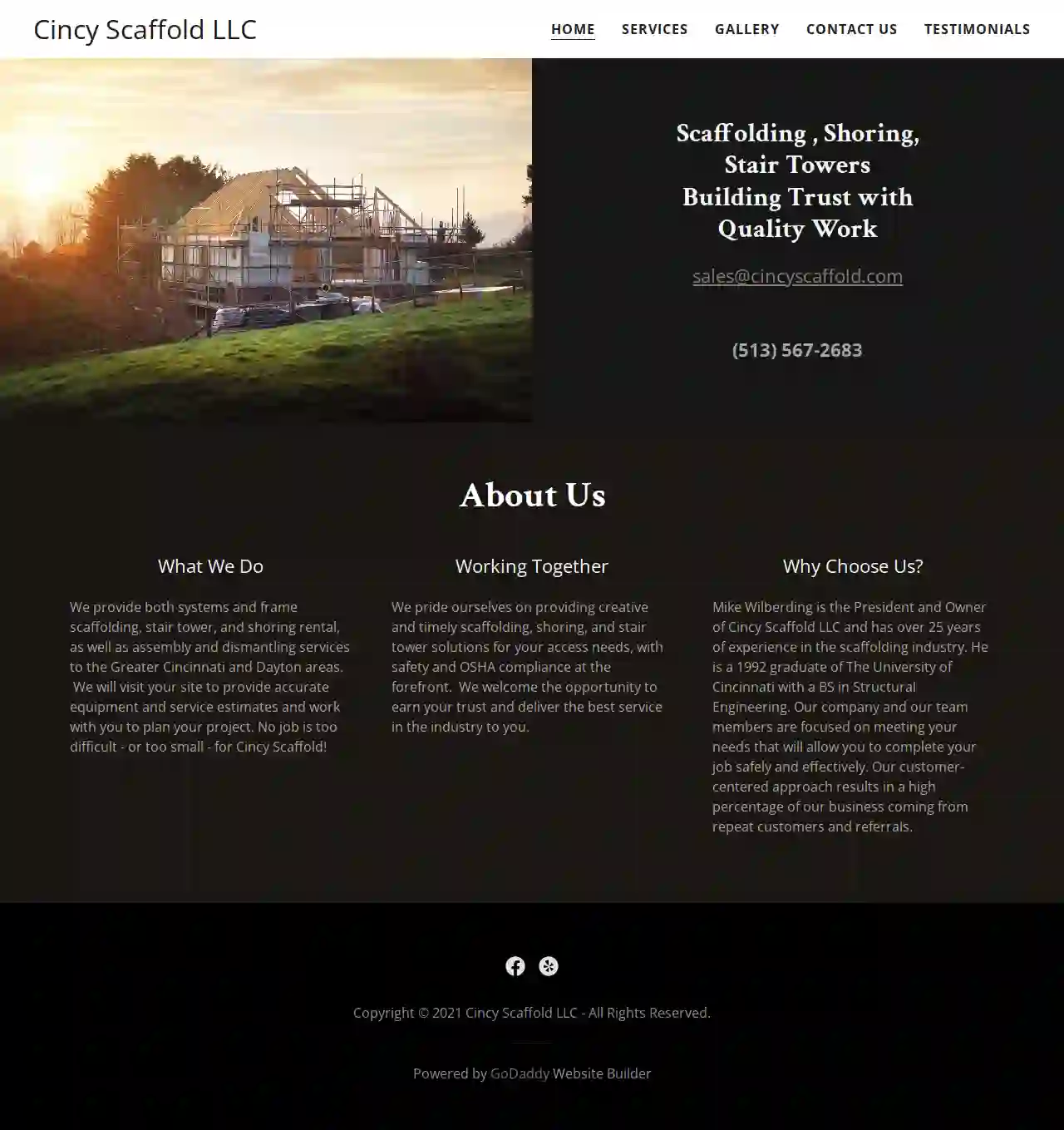
Cincy Scaffold LLC
52 reviewsP.O. Box 61, West Chester, 45071, USAt Cincy Scaffold LLC, we pride ourselves on providing creative and timely scaffolding, shoring, and stair tower solutions for your access needs. With over 25 years of experience in the scaffolding industry, our team is focused on meeting your needs to complete your job safely and effectively. We welcome the opportunity to earn your trust and deliver the best service in the industry to you. Our customer-centered approach results in a high percentage of our business coming from repeat customers and referrals. We provide both systems and frame scaffolding, stair tower, and shoring rental, as well as assembly and dismantling services to the Greater Cincinnati and Dayton areas. We will visit your site to provide accurate equipment and service estimates and work with you to plan your project. No job is too difficult - or too small - for Cincy Scaffold!
- Services
- Why Us?
- Our Team
Get Quote
Walmart Supercenter
3.7Lorain, USWelcome to Walmart! Walmart is a leading retailer that offers a wide variety of products and services at affordable prices. We are committed to providing our customers with a convenient and enjoyable shopping experience. Whether you're looking for groceries, electronics, clothing, or home goods, you're sure to find what you need at Walmart. We are proud to serve our community and offer a wide range of services, including pharmacy, photo center, and money services. Our friendly and knowledgeable associates are always available to assist you with your shopping needs. Shop online or visit one of our stores today and experience the Walmart difference!
- Services
- Why Us?
- Gallery
Get Quote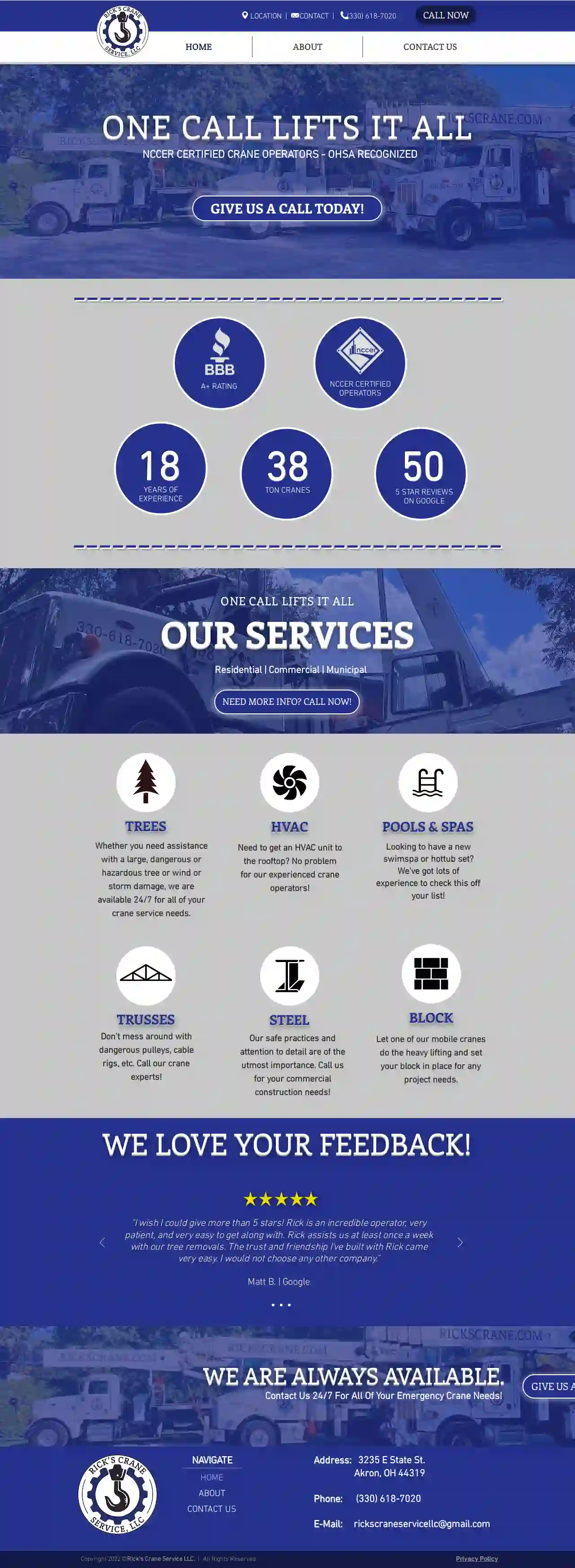
Ricks Crane Service LLC
551 reviews3235 E State St., Akron, 44319, USAt Rick's Crane Service LLC, we pride ourselves on being one of the most trusted and experienced crane service providers in the area. With over 18 years of experience and a team of NCCER certified crane operators, we're equipped to handle any job, big or small. Our services include residential, commercial, and municipal crane services, as well as specialized services like tree removal, HVAC unit installation, and pool and spa setup. We're committed to providing safe and efficient crane solutions that meet your needs and exceed your expectations. Contact us today to learn more about our services and how we can help you with your next project.
- Services
- Why Us?
- Accreditations
- Our Team
- Testimonials
- Gallery
Get Quote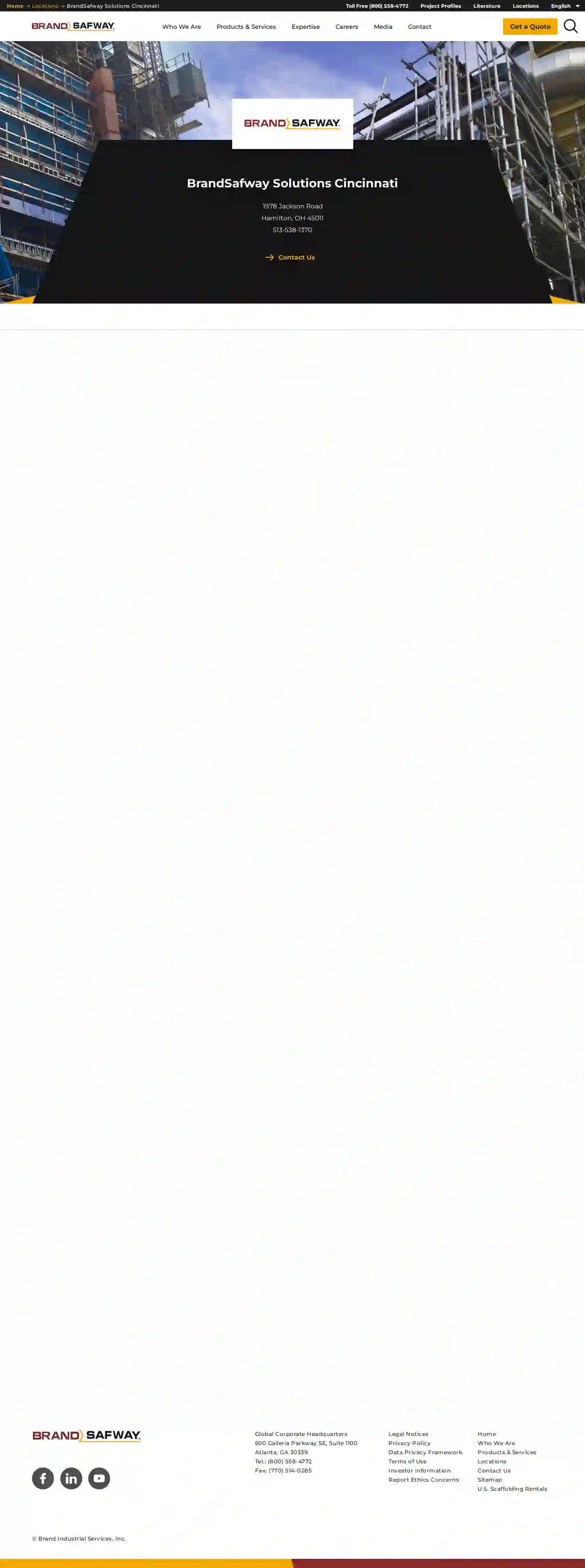
BrandSafway Solutions Cincinnati
4.33 reviews123 Access Lane, Cincinnati, 45202, USBrandSafway is a leading provider of access solutions, including scaffolding, aerial work platforms, and forming and shoring. With a strong presence in Cincinnati and Hamilton, the company offers a wide range of services to meet the needs of various industries. BrandSafway is committed to safety, innovation, and customer satisfaction, making it a trusted partner for businesses in the region.
- Services
- Why Us?
- Accreditations
- Our Team
- Testimonials
Get Quote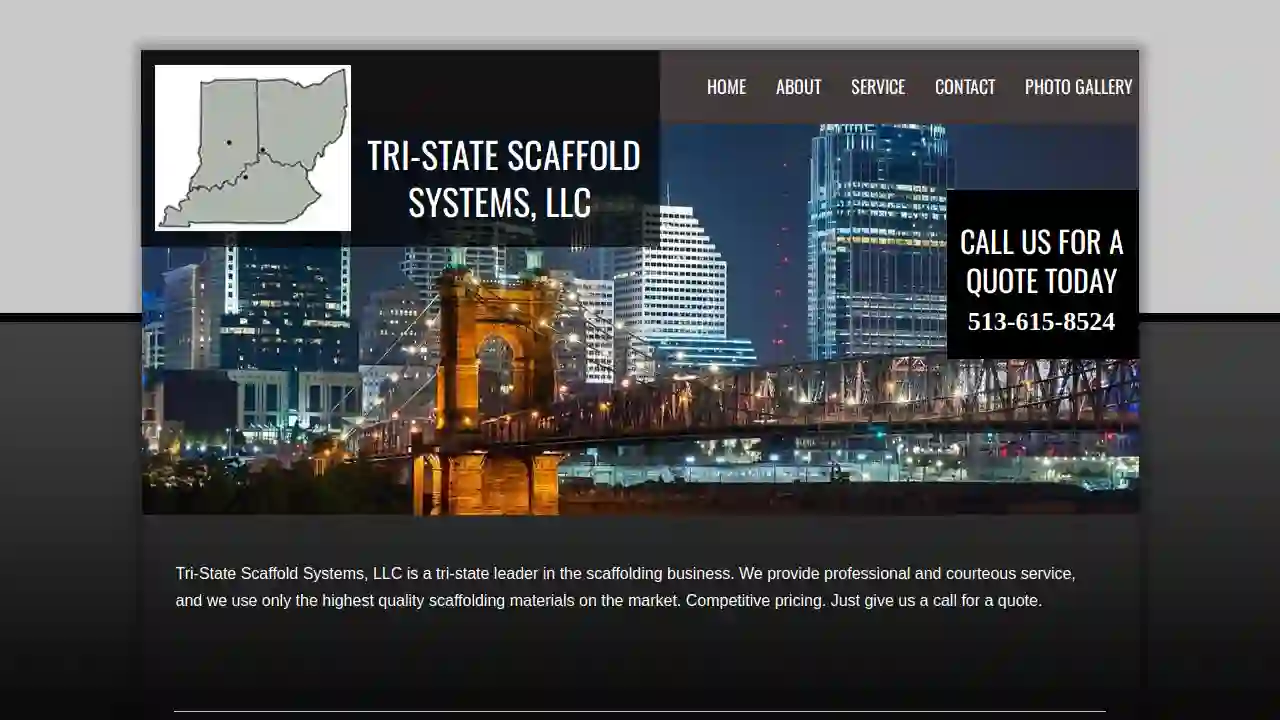
Tri-State Scaffold Systems, LLC.
4122 MOUNt carmel tobasco rd, Cincinnati, 45255, USTri-State Scaffold Systems, LLC is a tri-state leader in the scaffolding business, providing professional and courteous service with the highest quality scaffolding materials. With over 30+ years of experience, they specialize in the sale, service, rental, and repair of scaffold systems, including swing stages, work cages, scaffolding, rigging, sidewalk canopies, and erection and dismantlement services. They are committed to delivering superior quality and reliable equipment, with a highly knowledgeable staff that will see your project through from start to finish.
- Services
- Why Us?
- Accreditations
- Our Team
- Testimonials
- Gallery
Get Quote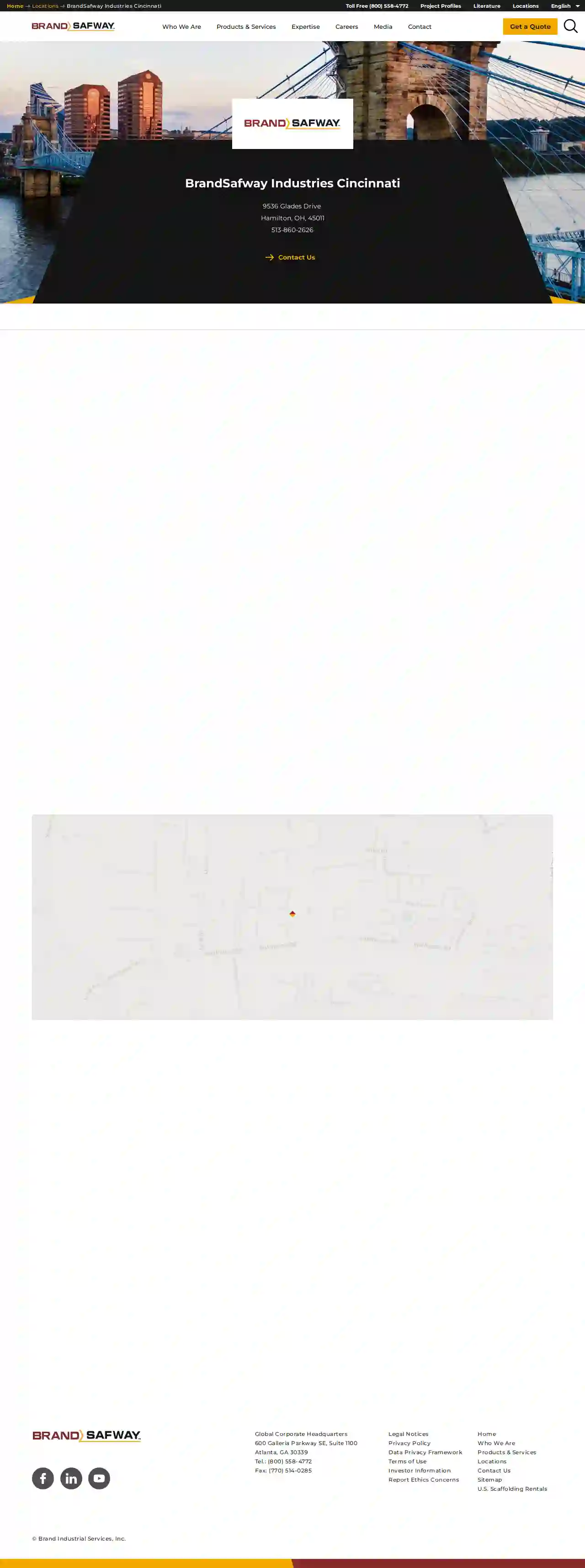
BrandSafway Industries Cincinnati
4.73 reviews123 Main St, Cincinnati, OH, 45202, USBrandSafway is a leading provider of access solutions, including scaffolding, aerial work platforms, and forming and shoring equipment. With a strong commitment to safety, quality, and customer satisfaction, BrandSafway offers a wide range of services tailored to meet the unique needs of clients across various industries. Their team of experienced professionals works closely with clients to understand their requirements and deliver customized solutions that enhance efficiency and productivity. BrandSafway is dedicated to providing innovative access solutions that ensure safe and efficient project execution.
- Services
- Why Us?
- Accreditations
- Our Team
- Testimonials
Get Quote
American Scaffolding Inc
54 reviews7161 Eagle Creek Rd, Cincinnati, 45247, USAmerican Scaffolding Inc. is a full-service scaffold company based in Cincinnati, OH, with a branch in Cleveland, OH. We specialize in providing quality, dependable scaffold equipment and work. Our company has been delivering excellent service for over 30 years, and we continue to prioritize quality customer service to meet all your access needs. Our mission is to provide the safest, most efficient, and reliable products in the ever-changing construction industry. We pride ourselves on our prompt service that caters to the fast-paced demands of the construction industry. Our adaptive ability and creative thinking allow us to conform to any project's needs. We offer rental, sales, erection, and dismantle of frame, system, and shoring scaffold, including Bee Access & Altrex suspended scaffold and more. We also offer a full line of fall protection equipment from various vendors.
- Services
- Why Us?
- Gallery
Get Quote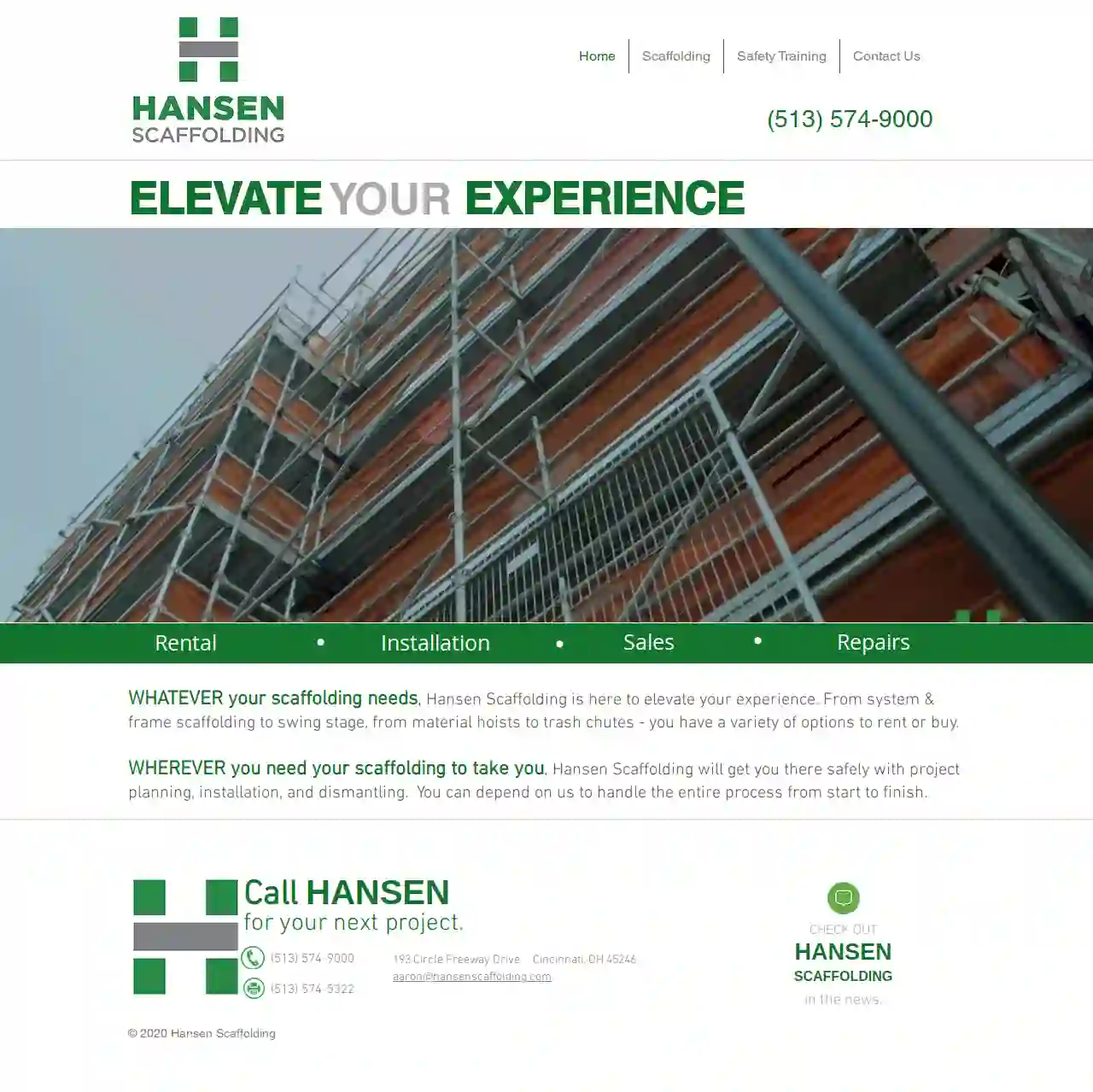
Hansen Scaffolding
4.76 reviews193 Circle Freeway Drive, Cincinnati, 45246, USAt Hansen Scaffolding, we're dedicated to providing top-notch scaffolding solutions for your next project. With a wide range of options to rent or buy, including system & frame scaffolding, swing stage, material hoists, and trash chutes, we've got you covered. Our team of experts will handle the entire process from start to finish, ensuring your project is completed safely and efficiently. From project planning to installation and dismantling, we're committed to delivering exceptional service and support. Our goal is to elevate your experience and provide you with the best possible scaffolding solutions. Contact us today to learn more about how we can help with your next project.
- Services
- Why Us?
- Gallery
Get Quote
Meijer
4.42929 28th St SW, Grand Rapids, 49512, USMeijer is a leading grocery store chain offering a wide range of products and services. With a strong commitment to customer satisfaction, Meijer aims to provide quality products at affordable prices. Their mission is to serve customers with excellence, ensuring a positive shopping experience.
- Services
- Why Us?
- Accreditations
- Our Team
- Testimonials
Get Quote
Over 2,353+ Scaffolding Contractors in our network
Our scaffolding experts operate in Fairborn & surrounding areas!
ScaffoldingHQ has curated and vetted Top Scaffolding Companies in Fairborn. Find the most trustworthy pro today.
Frequently Asked Questions About Scaffolding Companies
- Project Size and Complexity: The height, configuration, and accessibility of the scaffolding will influence the amount of materials and labor required.
- Scaffolding Type: Different scaffolding systems (tube and clamp, system scaffolding, suspended scaffolding) have varying costs.
- Duration of Rental: The length of time you need the scaffolding will affect the overall rental price.
- Location: Labor costs and material availability can differ based on your location.
- Additional Services: Some companies may offer additional services like erection, dismantling, or transportation, which can add to the cost.
- Workers: Consider the number of workers on the scaffolding at any given time.
- Materials: Include the weight of building materials, tools, and equipment being used on the platform.
- Environmental Factors: Factor in potential loads from wind or snow, especially for taller scaffolding structures.
- Regulations: Local regulations often specify minimum inspection intervals.
- Project Type and Duration: Long-term projects or those in challenging environments may require more frequent inspections.
- Weather Conditions: Severe weather (storms, high winds) can necessitate additional inspections.
- Any Alterations or Modifications: Any changes to the scaffolding structure require re-inspection.
Can I erect scaffolding myself?
How much does scaffolding cost to rent in the USA?
What is the weight limit for scaffolding?
How often should scaffolding be inspected?
Can I erect scaffolding myself?
How much does scaffolding cost to hire in the USA?
- Project Size and Complexity: The height, configuration, and accessibility of the scaffolding will influence the amount of materials and labor required.
- Scaffolding Type: Different scaffolding systems (tube and clamp, system scaffolding, suspended scaffolding) have varying costs.
- Duration of Rental: The length of time you need the scaffolding will affect the overall rental price.
- Location: Labor costs and material availability can differ based on your location.
- Additional Services: Some companies may offer additional services like erection, dismantling, or transportation, which can add to the cost.
What is the weight limit for scaffolding?
- Workers: Consider the number of workers on the scaffolding at any given time.
- Materials: Include the weight of building materials, tools, and equipment being used on the platform.
- Environmental Factors: Factor in potential loads from wind or snow, especially for taller scaffolding structures.
How often should scaffolding be inspected?
- Regulations: Local regulations often specify minimum inspection intervals.
- Project Type and Duration: Long-term projects or those in challenging environments may require more frequent inspections.
- Weather Conditions: Severe weather (storms, high winds) can necessitate additional inspections.
- Any Alterations or Modifications: Any changes to the scaffolding structure require re-inspection.